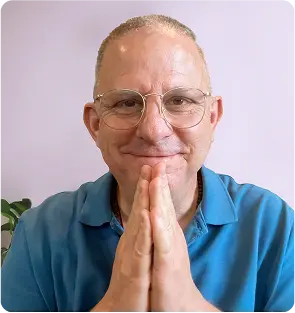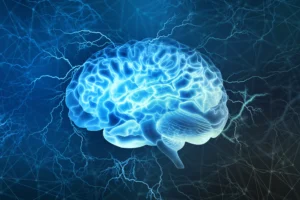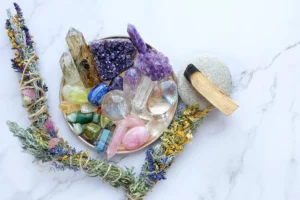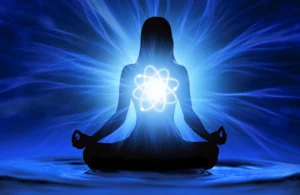
Escaping toxic family dynamics requires courage, planning, and compassion. By setting healthy boundaries and cultivating self love, we create the foundation for freedom, healing, and authentic living.
Exiting oppressive, religiously rigid, and judgmental family environments or similar systems requires courage, careful planning, and self-compassion. It’s a journey towards personal freedom and authenticity, often marked by challenges but also by profound growth and liberation.
Here’s a comprehensive approach to navigating this transition:
Solidify Your Sense of Self Amid Toxic Family Dynamics
Solidifying your sense of self is an essential process in navigating life’s complexities, especially when confronting oppressive systems or challenging family dynamics. This foundational work enables you to stand firm in your identity, values, and beliefs, acting as a compass that guides you through turmoil and towards fulfilling your true potential. Let’s delve deeper into the facets of this critical journey:
Deepening Self-Reflection to Heal from Toxic Family Dynamics
Engaging in deep self-reflection is a profound exercise in introspection, inviting you to question and explore the very core of who you are, what you believe in, and what you aspire to achieve in your life. This process involves peeling back the layers of social conditioning, expectations, and roles that have been imposed upon you, to reveal the authentic self lying beneath. It’s about examining your life’s experiences, the decisions you’ve made, and the dreams you harbor, to understand how they shape your current reality and future possibilities.
To deepen this reflective practice, consider keeping a journal where you can express thoughts, emotions, and revelations without censorship. Engage with questions that challenge you to think deeply about your values, such as “What principles do I refuse to compromise on?” or “What brings me genuine joy?” This ongoing dialogue with yourself enriches your understanding and fosters a resilient, authentic identity that can navigate life’s challenges with integrity and purpose.
Expanding Self-Education
Self-education is a powerful tool for empowerment, providing you with the knowledge and critical thinking skills necessary to navigate the world with confidence. By exposing yourself to a diverse range of perspectives and philosophies, you not only broaden your understanding of the world but also refine your own beliefs and values. This exploration can take many forms, from reading books and attending lectures to engaging in discussions with individuals whose experiences differ markedly from your own.
Dive into subjects that challenge your existing viewpoints, stimulate your curiosity, and inspire growth. Whether it’s philosophy, science, art, or social justice, the knowledge gained will equip you with the intellectual fortitude to make informed decisions, articulate your thoughts with clarity, and stand firm in your convictions, even in the face of opposition or scrutiny.
Cultivating Self Love and Acceptance After Toxic Family Dynamics
Cultivating self love is the antidote to the shame and judgment often inherited from toxic family dynamics.
The journey towards self-love and acceptance is both challenging and rewarding. It requires you to confront and dismantle the internalized messages of inadequacy, shame, or unworthiness that you may have absorbed from external judgments and expectations. Cultivating self-compassion involves treating yourself with the same kindness, understanding, and patience that you would offer a dear friend. It means recognizing your inherent worth and embracing your imperfections as part of the beautiful tapestry of who you are.
Practices such as mindfulness meditation, positive affirmations, and self-care rituals can nurture a loving relationship with yourself. Celebrate your successes, no matter how small, and view failures as opportunities for growth rather than reflections of your worth. By fostering a deep sense of self-love and acceptance, you build a foundation of inner strength and resilience, enabling you to meet life’s challenges with grace and to pursue your true path with unwavering self-assurance.
Solidifying your sense of self through deep self-reflection, expansive self-education, and the cultivation of self-love and acceptance is a dynamic and ongoing process. It empowers you to live authentically, pursue your aspirations with courage, and engage with the world from a place of strength and integrity.
Build a Support System for Setting Healthy Boundaries
Navigating the journey towards personal freedom and self-discovery, especially when distancing oneself from oppressive or judgmental environments, is profoundly challenging when undertaken alone. The value of finding a supportive community, leaning on trusted friends, and seeking professional support cannot be overstated. These pillars of support play crucial roles in providing comfort, guidance, and validation throughout this transformative process.
Expanding the Search for Community
Finding a community that resonates with your values and experiences is akin to discovering a sanctuary where you can express yourself freely and be understood without judgment. In today’s connected world, these communities can be found both in physical spaces and online platforms, offering diverse opportunities for connection. Whether it’s support groups, forums, social media platforms, or local clubs and organizations dedicated to your interests or causes, there’s a plethora of options available.
When seeking these communities, prioritize those that offer a safe, respectful, and welcoming environment. Participate in discussions, attend meetings or events, and share your experiences and insights when comfortable. These interactions not only enrich your journey but also contribute to the sense of belonging and collective strength within the group. Remember, the goal is to find a space where you feel seen, heard, and valued, where the collective wisdom of the group empowers each member to navigate their challenges with greater confidence and less isolation.
Cultivating Relationships Beyond Toxic Family Dynamics
The role of trusted friends or mentors in your journey cannot be overstated. These are the individuals who offer a listening ear, a shoulder to lean on, and words of wisdom when you face crossroads or challenges. Their support can be a beacon of light during moments of doubt, providing the encouragement needed to continue moving forward. To deepen these relationships, be open about your needs and challenges, while also offering your support and gratitude for their presence in your life. Mutual respect and understanding are the bedrocks of these relationships, fostering a safe space for growth and exploration.
In building these connections, remember that quality far outweighs quantity. A few close, supportive friends can provide more meaningful support than a large number of acquaintances. Cherish and nurture these relationships, as they are instrumental in your journey towards healing and self-discovery.
Seeking Professional Support for Setting Healthy Boundaries
The complexity of navigating away from oppressive environments, especially those entangled with familial bonds and religious or cultural expectations, can often require professional guidance. Therapists or counselors experienced in dealing with family estrangement, religious trauma, or identity crises can offer invaluable support. These professionals provide a non-judgmental space to explore your feelings, experiences, and challenges, offering strategies and insights to help you process and heal.
When selecting a professional, look for someone whose approach resonates with you and who has experience relevant to your specific challenges. It’s also essential to feel a sense of trust and comfort with them, as this relationship is a partnership in your journey towards healing. Don’t hesitate to reach out to multiple professionals to find the right fit; this process is about your healing and finding someone who can best facilitate that.
The Sedona Method and working with an insightful coach can help you clear all the related emotions and set your life on a path of freedom and fulfillment.
Together, these pillars of support — community, trusted friends, and professional guidance — create a robust network that sustains you as you navigate the path to finding and affirming your true self. Each offers unique forms of support, insight, and companionship, essential for weathering the storms of change and emerging with a stronger, more authentic sense of identity.
Plan Your Exit from Toxic Family Dynamics Strategically
Achieving financial independence, securing safe housing, and understanding legal considerations are critical steps in establishing a life of freedom and autonomy, especially when separating from oppressive or restrictive environments. These steps not only provide the practical means to support oneself but also form the bedrock of a secure and self-determined future. Let’s delve into how each of these areas can be approached with strategic planning and thoughtful action.
Achieving Financial Independence
Financial independence is fundamental to gaining the freedom to make choices that align with your true self, free from the constraints or influences of those who do not have your best interests at heart. Working towards this goal involves several key strategies:
Budgeting and Saving: Develop a clear understanding of your finances through budgeting. Track your income and expenses to identify areas where you can cut back and save. Prioritize building an emergency fund that can cover several months of living expenses, giving you a buffer in times of need.
Increasing Income: Look for opportunities to increase your income, whether through advancing in your current job, taking on additional part-time work, freelancing, or exploring new career paths that offer greater financial rewards and fulfillment.
Financial Education: Educate yourself on financial management principles, including saving, investing, and managing debt. Knowledge is power, and understanding how to manage your finances effectively can significantly enhance your ability to achieve and maintain independence.
Securing Safe Housing
A safe and stable living environment is essential for well-being and serves as a sanctuary where you can grow, heal, and thrive. Consider various options based on your needs and financial situation:
Renting Your Own Place: If financially viable, renting your own apartment or house provides privacy and independence. Research the rental market, understand your rights as a tenant, and choose a place that meets your needs and budget.
Staying with Friends or Family: Temporarily staying with supportive friends or family members can provide a transitional safe space as you work towards greater independence. Ensure clear communication regarding expectations and timelines to maintain healthy relationships.
Exploring Communal Living: Communal living arrangements, such as co-ops or shared houses, can offer affordable housing options while also providing a sense of community and mutual support. Research thoroughly to find a community that aligns with your values and lifestyle preferences.
Legal Considerations When Exiting Toxic Family Dynamics
Navigating the legal aspects of leaving oppressive environments or systems, especially when it involves changing personal circumstances like custody arrangements or identity documents, requires careful attention:
Research Your Rights: Familiarize yourself with the legal rights and processes relevant to your situation. This might include understanding the laws around divorce, custody, name changes, or identity document updates in your jurisdiction.
Seek Legal Advice: Consider consulting with a legal professional who can provide advice tailored to your specific circumstances. Many communities offer free or low-cost legal services for those who cannot afford traditional legal representation.
Prepare Documentation: Collect and organize important documents you may need, such as birth certificates, passports, and any legal papers. Having these documents readily accessible can streamline legal processes and support your transition.
Each of these steps towards financial independence, secure housing, and legal preparedness not only contributes to your immediate well-being but also lays the foundation for a future where you can live authentically and freely. While the journey may require time, effort, and perseverance, the outcome—a life lived on your own terms—is immeasurably rewarding.
Communicate Your Decision While Setting Healthy Boundaries
Planning the conversation about your departure is crucial. It involves thoughtful consideration of not just what you’ll say, but how, when, and where you’ll say it. Choose a time and place where you feel safe and where the conversation can happen without interruptions.
Think about the key points you want to convey and prepare yourself mentally for various reactions. It may help to write down your thoughts or practice what you want to say. This preparation isn’t about scripting every moment but ensuring your message is clear and that you’re ready to express your needs and decisions confidently.
Sometimes, a text or email will suffice. There is no reason to further exacerbate your pain and continue to the drama if you are certain there is no room for your voice at the table. Exit swiftly and move on to create a fulfilling life.
Setting Healthy Boundaries with Toxic Family Dynamics
Setting boundaries is an act of self-care that delineates where your limits lie and how you expect to be treated moving forward. Be clear and direct about these boundaries, especially regarding how and if you wish to maintain contact. It’s essential to be assertive but respectful, making it clear that these boundaries are non-negotiable and rooted in your need for respect and well-being. Remember, boundaries aren’t just about distancing yourself from others; they’re about creating the space for healthy interactions on your terms.
Expect Resistance When Setting Healthy Boundaries
Anticipating and preparing for resistance is vital. Not everyone will understand or support your decision, and some may react negatively or attempt to persuade you to stay. Steel yourself for this possibility and remind yourself why you’re making this choice. Lean on your support system for strength and affirmation when faced with resistance. Their support can be a powerful reminder that you’re not alone and that your decision is valid and important for your happiness and growth.
Embrace Your New Journey
With the space and freedom from oppressive influences, you have a unique opportunity to delve into who you are and who you want to be. This exploration is a deeply personal process that can involve trying new experiences, reflecting on your desires and dreams, and even reevaluating aspects of your identity that you took for granted. Allow yourself the freedom to question, to wonder, and to experiment. Discovering your identity outside of previous constraints is a journey of empowerment that leads to a richer, more fulfilled self.
Cultivate New Beliefs While Cultivating Self Love
As you move forward, you’ll encounter new ideas, philosophies, and ways of seeing the world. Engage with these openly and curiously. This engagement is an opportunity to build a belief system that truly resonates with your core self, free from the impositions of your prior environment. Seek out books, communities, and experiences that challenge you to think differently and that align with your values. This cultivation of new beliefs is a dynamic process, one that encourages growth and a deeper understanding of yourself and the world around you.
Heal and Grow Beyond Toxic Family Dynamics
Healing from the trauma of oppressive environments is a gradual and ongoing process. It requires patience, kindness to oneself, and the understanding that healing doesn’t follow a linear path. Embrace both your strengths and vulnerabilities as you navigate this journey. Allow yourself to grieve what was lost and to celebrate the steps you take towards recovery. As you heal, you’ll find yourself building a life that not only reflects your values and aspirations but also brings a sense of peace, fulfillment, and authenticity.
Each of these steps, from communicating your decision to embracing your new journey, is integral to moving towards a life defined by your own terms. This path is both challenging and incredibly rewarding, leading to a profound sense of self-discovery, freedom, and the joy of living authentically.
Seek Joy and Fulfillment Through Cultivating Self Love
Seeking joy and fulfillment is an essential part of creating a life that truly reflects who you are and celebrates your individual journey. After stepping away from oppressive environments, engaging in activities and practices that nourish your spirit and bring happiness can be incredibly healing and empowering. Here, we’ll explore specific spiritual practices (sadhana) and other enjoyable activities that can support you in releasing the past and moving forward with a sense of freedom and fulfillment.
Spiritual Practices for Cultivating Self Love and Healing
Meditation and Mindfulness: Engage in daily meditation to foster a sense of inner peace and connectedness with yourself. Mindfulness practices can help you live in the present, appreciate the moment, and reduce stress and anxiety.
Yoga: Incorporate yoga into your routine to enhance physical health, reduce stress, and achieve a greater sense of balance and harmony between mind, body, and spirit. Yoga practices range from gentle forms like Hatha Yoga to more intense forms like Ashtanga or Vinyasa.
Mantra Chanting: Chanting or listening to mantras can be a powerful way to center your mind and connect with a deeper sense of spiritual energy. Mantras like “Om” or “Om Namah Shivaya” can be soothing and transformative.
Nature Walks and Earthing: Spend time in nature to ground yourself and connect with the earth. Walking barefoot, known as earthing, can help reduce stress levels and improve mood.
Journaling as a Spiritual Practice: Use journaling to reflect on your spiritual journey, document insights gained during meditation or yoga, and explore your inner thoughts and feelings. This can be a powerful tool for self-discovery and healing.
Fun Activities for Joy and Fulfillment
Creative Arts: Engage in creative activities such as painting, writing, music, or dance. Creative expression is a powerful way to explore your feelings, express yourself, and find joy in the act of creation.
Learning New Skills: Whether it’s learning a new language, cooking, gardening, or playing a musical instrument, acquiring new skills can be fulfilling and fun. It stimulates your brain, gives you a sense of accomplishment, and enriches your life.
Volunteering: Giving back to the community or supporting causes you care about can bring a deep sense of fulfillment and connection to others. Look for volunteer opportunities that align with your values and interests.
Adventure and Exploration: Embrace your freedom by exploring new places, trying new foods, or undertaking adventures like hiking, camping, or traveling. These experiences can be exhilarating and offer fresh perspectives on life.
Social Connections: Cultivate relationships with people who share your interests, values, and zest for life. Attend workshops, classes, or meet-ups that align with your hobbies or spiritual interests. Positive social interactions can significantly enhance your joy and sense of belonging.
Building a life that prioritizes joy and fulfillment involves exploring a variety of activities and practices that resonate with your soul. It’s about allowing yourself to experience new things, fostering connections that uplift you, and creating spaces for self-expression and healing.
By integrating these spiritual practices and engaging in activities that bring you happiness, you create a rich, vibrant life that celebrates your freedom and individuality. Remember, the pursuit of joy is not just an act of personal fulfillment but a profound journey of self-discovery and transformation.
The Value of the Fuck You in Setting Healthy Boundaries
In the context of navigating oppressive systems or familial dynamics where one is continually judged or marginalized, especially as the “truth teller” or “black sheep,” employing a strong, unequivocal response such as “fuck you” or “fuck off” can sometimes serve as a powerful tool for self-affirmation and boundary setting.
This type of response, while stark and perhaps shocking, can carry deep significance both for the individual asserting it and for those on the receiving end. It’s important to consider the implications and potential outcomes of such an approach, recognizing its role in certain situations where subtler forms of communication have failed or been ignored.
Asserting Self-Respect by Setting Healthy Boundaries
For the truth teller, using a forceful statement to reject continued judgment or oppression is an act of reclaiming power in a relationship or system that has been dismissive or abusive. It signifies a refusal to tolerate further harm, embodying a stand for one’s dignity and rights. This moment of defiance can be pivotal, marking a clear boundary that signals the end of compliance with oppressive norms and expectations.
Awakening Impact
From the perspective of those entrenched in perpetuating judgment or denial, encountering such a raw and unfiltered response can serve as a jarring wake-up call. It disrupts the usual dynamics and forces a confrontation with the reality of the impact their actions or words have on others. While not always leading to immediate change, it can plant seeds of awareness that challenge existing perceptions and behaviors.
Toxic Family Dynamics as a Catalyst for Change
For the individual, articulating such a powerful rebuke can be liberating, serving as a catalyst for significant life changes. It can provide the emotional impetus and clarity needed to exit toxic situations, relationships, or systems that constrain personal growth and happiness. This act of defiance can be the first step towards seeking healthier environments and relationships that respect and affirm one’s worth.
Considerations and Consequences of Setting Healthy Boundaries
It’s essential to weigh the potential consequences of using such confrontational language, as it can escalate conflicts or lead to the severance of relationships. It may not always be the most effective or safest option, depending on the circumstances. However, in some contexts, it might be the most authentic and impactful way to communicate the depth of one’s feelings and to initiate a break from oppressive dynamics.
The Power of Authentic Expression in Cultivating Self Love
By confronting toxic family dynamics, practicing setting healthy boundaries, and consistently cultivating self love, we move toward a life rooted in freedom, healing, and empowerment.
Ultimately, the value of a defiant “fuck you” lies in its authenticity and the assertion of one’s truth in the face of denial and suppression. It embodies a refusal to be silenced or diminished, marking a moment of profound self-assertion. For those who have felt powerless or voiceless, it can be a declaration of self-sovereignty and a refusal to be complicit in their own oppression.
In navigating the path forward, whether in leaving an oppressive system or in transforming one’s role within it, the journey is deeply personal. It requires courage, self-awareness, and a commitment to living authentically. The use of strong language, in this context, is more than mere words; it’s a statement of resistance, a claim to space, and a step towards liberation.
Exiting an oppressive environment is a deeply personal and sometimes risky endeavor. It’s important to proceed with caution, particularly if you anticipate severe repercussions. The freedom to live authentically and pursue your happiness is a fundamental right, and taking steps to claim this freedom is both brave and commendable. Remember, it’s not just about leaving a place of restriction but moving towards a space of self-realization and fulfillment.
Last Updated; September 28, 2025















